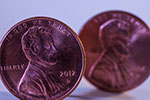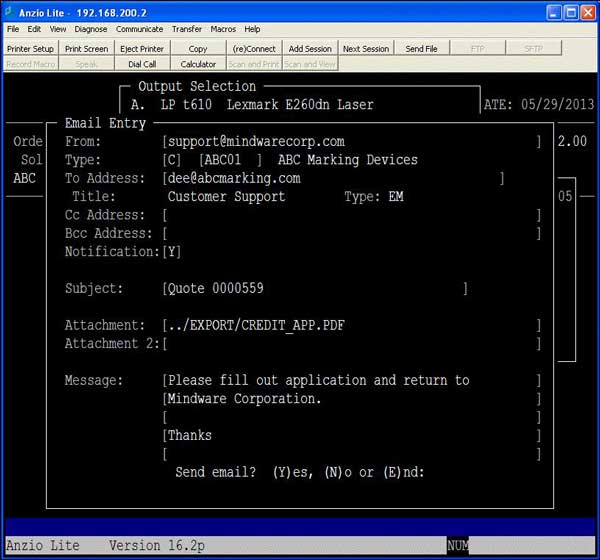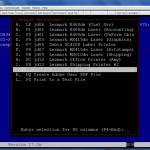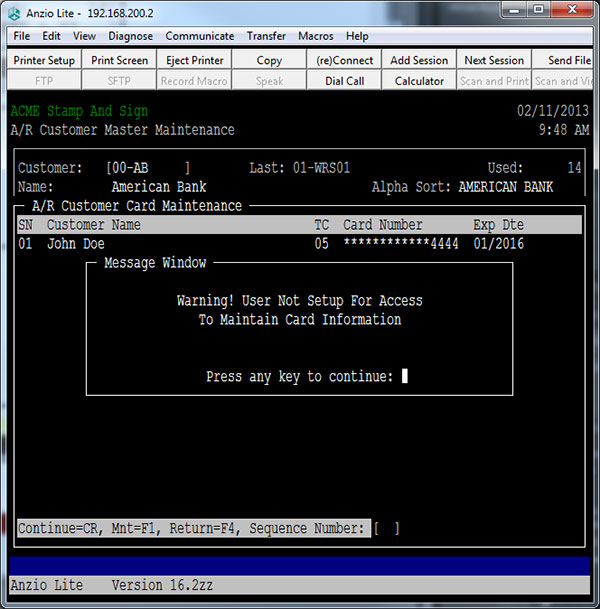Install ODBC Driver On UPS PC
The Basis ODBC or JDBC driver will need to be installed to interface with the UPS Worldship software. Below are links for both.
ODBC: https://mindwarecorp.com/top-interfacing/install-basis-odbc-driver/
JDBC: https://mindwarecorp.com/top-interfacing/basis-jdbcodbc-installation/
UPS Worldship Installation
Notes:
Where ever you see ### you will need to replace that with the TOP company number, example 001 for company 1.
Follow the UPS Worldship instructions to install the software on the UPS Worldship CD-Rom if it has not already been installed.
Map Drive on UPS PC
Notes:
It will be necessary to map the UNIX top directory to the R drive on the UPS PC.
Click on this link for how to map TOP drives.
Create Folders on UPS PC
- Create the following folders on the UPS PC (this can be done from the DOS prompt using the MKDIR command or by using the My Computer icon). You will need to create a CO### folder for each TOP company that is going to be interfaced with UPS.
- C:\TOP_DATA (contains cpy_ups###.bat)
- C:\TOP_DATA\CO### (contains top_ups.tpm)
- C:\TOP_DATA\SGDIR (contains *.1 files)
Download UPS interface files from Mindware website
1. Go to https://mindwarecorp.com/downloads-top-shipping-interface/. Click on Save Target AS -> Click on Browse -> Save files in C:\TOP_DATA\SGDIR folder
2. Unzip the interface files in the C:\TOP_DATA\SGDIR folder
3. Copy C:\TOP_DATA\SGDIR\cpy_ups.bat to the C:\TOP_DATA\CO### folder. The contents of the file is below. You will need to do this for each TOP company.
COPY R:\CO001\OEST1 C:\TOP_DATA\CO001
Notes:
If you are using a company number besides 001, you will need to use NotePad to edit the file. Change the 001 in both places to the correct company number.
4. Copy C:\TOP_DATA\SGDIR\top_ups.tpm to the C:\TOP_DATA\CO### folder. The contents of the file is below. You will need to do this for each TOP company.
DICTIONARY=C:\TOP_DATA\SGDIR\
DATA=C:\TOP_DATA\CO001\
Notes:
If you are using a company number besides 001, you will need to use NotePad to edit the file. Change the 001 to the correct company number.
Create an Icon to Copy the Ship-To File
1. Create an icon for copy command:
Right Click on desktop -> Select New -> Select Shortcut
Use browse to select the C:\TOP_DATA\CO###\CPY_UPS.BAT file
Enter icon name: Copy TOP ### Ship-To File
Select Finish
Create UPS Map
1. Start UPS Worldship software
2. Select Import-Export > Tools
3. Select Connection Assistant
4. Select Create a new map for import -> Select Next
5. For Import Data Type select Shipment -> Select Next
6. Select By Known ODBC Source
7. Select Launch the ODBC Administrator (then follow the steps below)
- Select System DSN Tab
- Select Add Button
- Select BBj ODBC Driver
- Select Finish Button
- Name: TOP_SHP###
- Description: Total Order Plus Shipping – ###
- Server: Name Of PC
- Database: TOP_SHP###
- User Name: admin
- Password: admin123
- Select OK
8. Select TOP_SHP### from ODBC Sources list > Select Next
9. Select New Map
10. Enter TOP_UPS### for New Map Name -> Select Next
11. Select Finish
12. Select OE_SHIPTO for ODBC Table
13. Select Ship To for WorldShip Fields
14. Connect the following fields, first select field from OE_SHIPTOVIEW -> From Ship To Select Connect.
[one_half]
OE_SHIPTO
CC_NAME
SHIPTO_ADD1
SHIPTO_ADD2
SHIPTO_ADD3
SHIPTO_CITY
SHIPTO_NAME
SHIPTO_STATE
SHIPTO_ZIP
SHIPTO_CTRY
ORDER_NO
RECV_UPS_NO
[/one_half]
[one_half]
Ship To
Attention
Address 1
Address 2
Address 3
City or Town
Company or Name
State
Postal/ZIP Code
Country/Territory
Customer ID
Receiver UPS Account Number
[/one_half]
15. Select ORDER_NO then select Define Primary Key for Import button
16. Select Package for WorldShip Fields
[one_half]
OE_SHIPTO Package
ORDER_NO
PO_NO
INVOICE_NO
SHPMNT_VALUE
[/one_half]
[one_half]
TO Package
Reference 1
Reference 2
Reference 3
Declared Value Amount
[/one_half]
17. Select Shipment Information for WorldShip Fields
[one_half]
OE_SHIPTO
SERVICE_TYPE
BILLING_OPT
NOTIFY_FLG
NOTIFY_FLG
EMAIL_ADDR
[/one_half]
[one_half]
Shipment Information
Service Type
Billing Option
QVN Option
QVN Ship Notification Option
Notification Recipient 1 E-mail
[/one_half]
18. Select Ship From for WorldShip Fields
[one_half]
OE_SHIPTO
RETURN_NAME
RETURN_ADD1
RETURN_ADD2
RETURN_CITY
RETURN_STATE
RETURN_ZIP
RETURN_CTRY
[/one_half]
[one_half]
Ship From
Company or Name
Address 1
Address 2
City or Town
State/Province/Country
Postal/ZIP Code
Country/Territory
[/one_half]
19. Select OK
20. Select No to batch import question
Notes:
Repeat for each company beginning with step number 2.
Setup Keyed Import
- Select UPS OnLine Connect
- Select Keyed Import
- Select More
- Select TOP_UPS### (where ### is the company number)
- Select Import
Using UPS With TOP ODBC Interface
- Double Click on Copy TOP Ship-To File icon
- Start UPS Worldship
- Select Import-Export
- Select Keyed Import
- Select TOP_UPS### (where ### is the company number, if first time select More, then select TOP_UPS###)
- Enter TOP Order Number (Include leading zeros) and push the Enter or Tab key (below is example of keyed import entry window)

Setting Up Service Type In TOP
- Enter a ? from any Order Entry Menu
- Select Ship Via Maintenace
- Enter F1 for Maintenance from display mode
- Enter TOP ship via code for UPS
- Select N to edit
- Enter correct UPS service type for each corresponding ship via code, see list below:
- Next Day Air Early AM
- Next Day Air
- Next Day Air Saver
- 2nd Day Air AM
- 2nd Day Air
- 3 Day Select
- Ground
 My Two Cents, by Archie Tucker
My Two Cents, by Archie Tucker
 The Tech Line, by Joanne Simmons
The Tech Line, by Joanne Simmons


